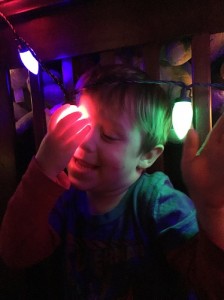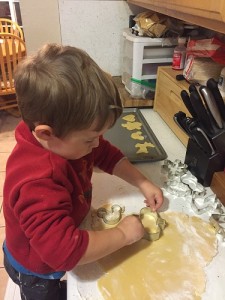Have you ever wondered why toddlers and preschoolers love to play with bumpy, slippery, wet, gooey and smooth stuff all at one time? And by play I mean they like to touch, smell, taste, see and hear it make sounds too!! All of this is a part of their messy play which we occupational therapist define as sensory play!! Why is Sensory play so important for kids?? While it might be a big challenge to clean up the mess for the adults, it is important!!
 Many play theorists define play as categories of activities in which children engage. These include activities such as games which have rules, building and construction like the LEGO, dramatic play like shadow and puppets and of course sensory play like playing with sand, paint, play-doh etc. Children`s play activities evolve over time which reflects their age appropriate development. Children of different ages have different styles of play which is why children of different ages often don’t play well together. Children who are still engaging in younger levels of play love to explore objects by not just looking but by other senses too like auditory(hearing), tactile (touching), olfactory (smelling) and tasting. This full body exploration is common during infancy and the first 2-3 years of their lives. Sensory play dominates the infancy and begins to decline through the preschool years but may reappear when the child is learning many new skills. This is not to say that older children don’t like to get messy and use full body exploration, it just is not as common.
Many play theorists define play as categories of activities in which children engage. These include activities such as games which have rules, building and construction like the LEGO, dramatic play like shadow and puppets and of course sensory play like playing with sand, paint, play-doh etc. Children`s play activities evolve over time which reflects their age appropriate development. Children of different ages have different styles of play which is why children of different ages often don’t play well together. Children who are still engaging in younger levels of play love to explore objects by not just looking but by other senses too like auditory(hearing), tactile (touching), olfactory (smelling) and tasting. This full body exploration is common during infancy and the first 2-3 years of their lives. Sensory play dominates the infancy and begins to decline through the preschool years but may reappear when the child is learning many new skills. This is not to say that older children don’t like to get messy and use full body exploration, it just is not as common.
Sensory Play contributes to the development of the child in a crucial way. By using their sensory system children are able to lay foundation for their complex skills such as fine-motor development (small muscles), visual-perceptual skills and categorization of similar and different objects for future use. Sensory play or exploring materials with no knowledge during the early years helps to develop and refine cognitive, social and emotional,  physical, creative and linguistic skills.
physical, creative and linguistic skills.
There are many types of sensory play (e.g. touching, smelling, hearing, tasting, and hearing). Combining two or more senses during the play is an excellent way to enhance skills and integrate them for future use.
Sensory play through vision consists of using lights and shadows. Shadows of various objects may help the child to identify objects and store it in their memory. It also helps the child understand the concept of shadows and learn colors using different colored lights which is fun too. Think of the Christmas lights to identify green and red colors. Shadows and puppets are a unique way to keep the infant or a toddler interested in a conversation and also helps them to build good communication skills. Kids become a lot more aware of themselves and of the surroundings during these types of play which in turn build up their body image and sense of self during the early childhood.
 Sensory play through touch involves getting acquainted with different textures and learning what each object feels like. This play helps to improve perceptual skills like stereognosis. Wondering what it is?? Imagine closing your eyes and trying to find your house keys by placing your hand in your handbag and searching for it. Easy for you right!! Kids too learn to remember an object by touch. While a child is involved in a sand play or shaving foam, he/she is learning if sand is smooth or rough or if shaving foam is soft or hard. Touch also helps them to manipulate their hand skills which in turn helps their hand muscles to develop for fine motor development. One of the important aspect for handwriting skills during the school years.
Sensory play through touch involves getting acquainted with different textures and learning what each object feels like. This play helps to improve perceptual skills like stereognosis. Wondering what it is?? Imagine closing your eyes and trying to find your house keys by placing your hand in your handbag and searching for it. Easy for you right!! Kids too learn to remember an object by touch. While a child is involved in a sand play or shaving foam, he/she is learning if sand is smooth or rough or if shaving foam is soft or hard. Touch also helps them to manipulate their hand skills which in turn helps their hand muscles to develop for fine motor development. One of the important aspect for handwriting skills during the school years.
Sensory play through auditory consists of listening to different sounds and trying to identify them. Now you know why your child loves listening to different rhymes and songs. Music and songs also are processed in a different part of the brain than spoken language which often helps children reinforce what is being learned when you speak to them. Music also has a way of getting “stuck in your hear” which helps the child continue the learning even once the music has stopped.
Sensory play through taste and olfactory go hand in hand. Many children explore objects through taste and smell too. Playing taste games helps a child develop taste for fruits and vegetables at an early age and also enjoy food of different textures and smell. When  introducing children to new foods it’s important for them to experience the smell, and taste at their own pace. It’s important to remember to never force a child to tastes something, unless they want to. Often time you will taste and learn to “like” new foods by simply smelling them. Our smell and taste systems are closely linked.
introducing children to new foods it’s important for them to experience the smell, and taste at their own pace. It’s important to remember to never force a child to tastes something, unless they want to. Often time you will taste and learn to “like” new foods by simply smelling them. Our smell and taste systems are closely linked.
So the next time you see your kids involved in the messy play think of it as a complex problem solving skill for you (how to clean up the mess!!) and a learning experience for your child!!
Reference: Occupational therapy for Children by Jane Case-Smith
Sensory Integration Theory and Practice by Anita C.Bundy